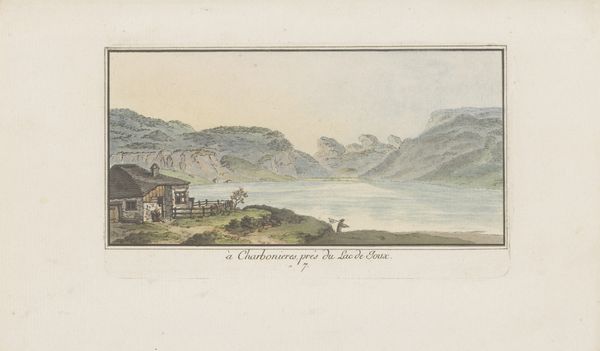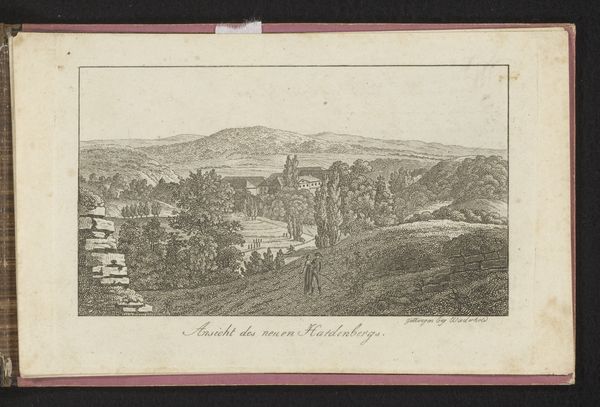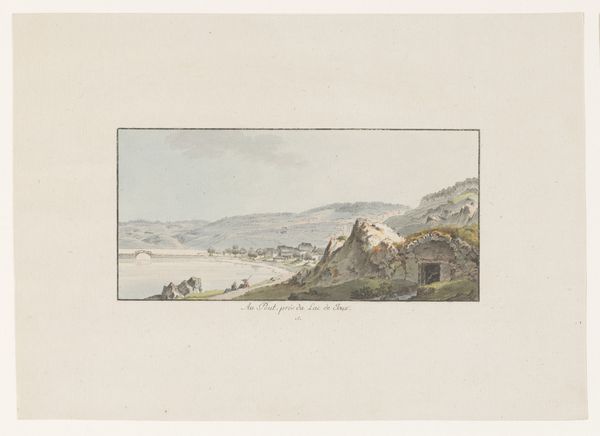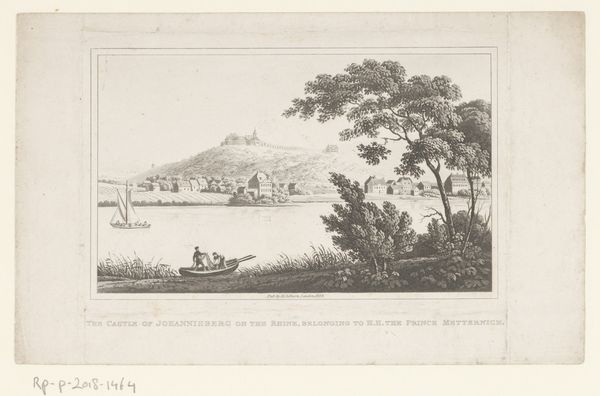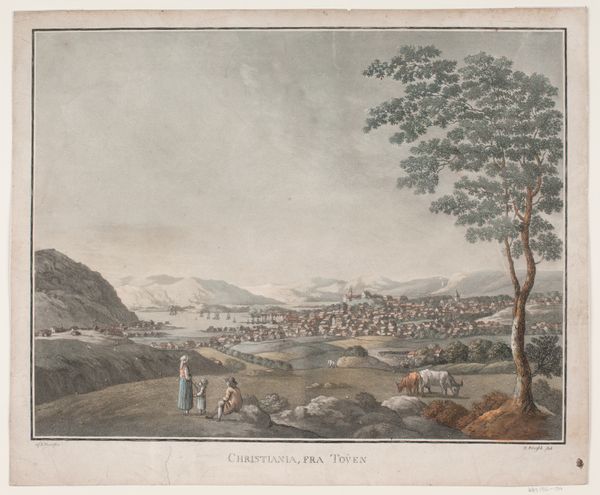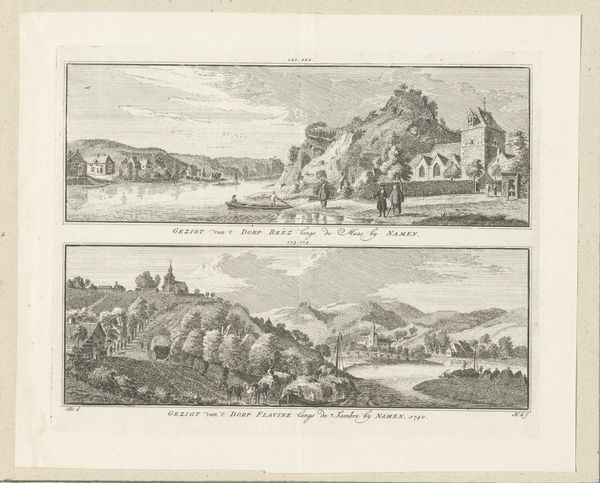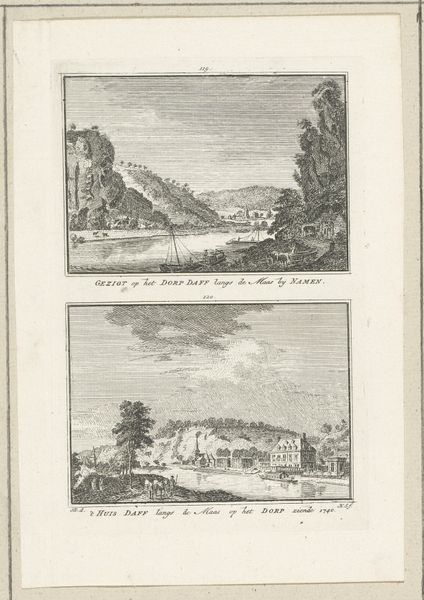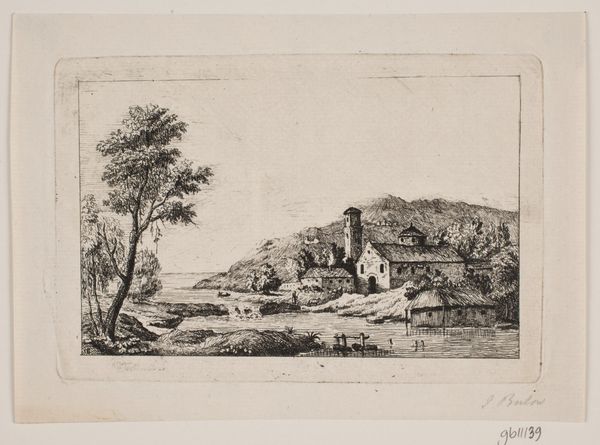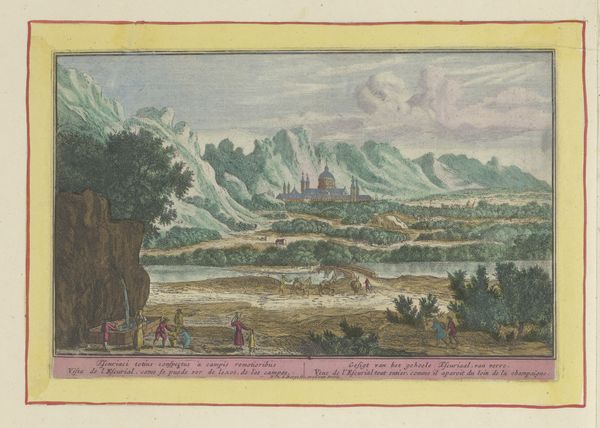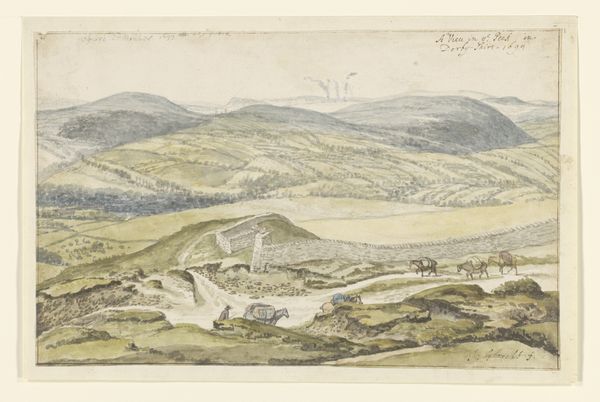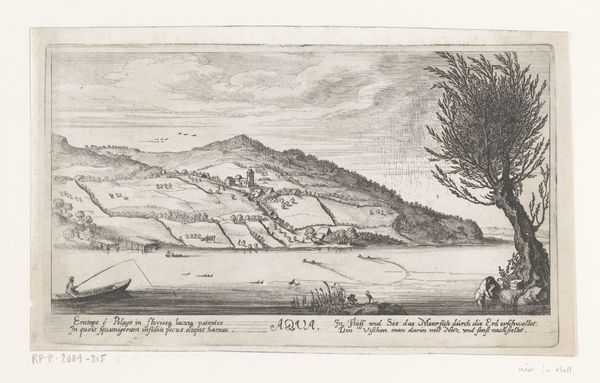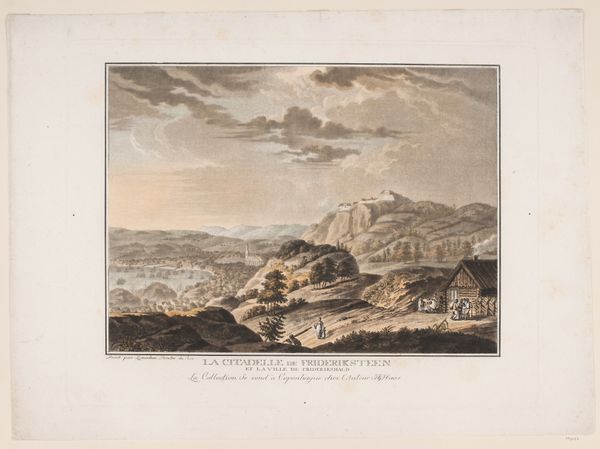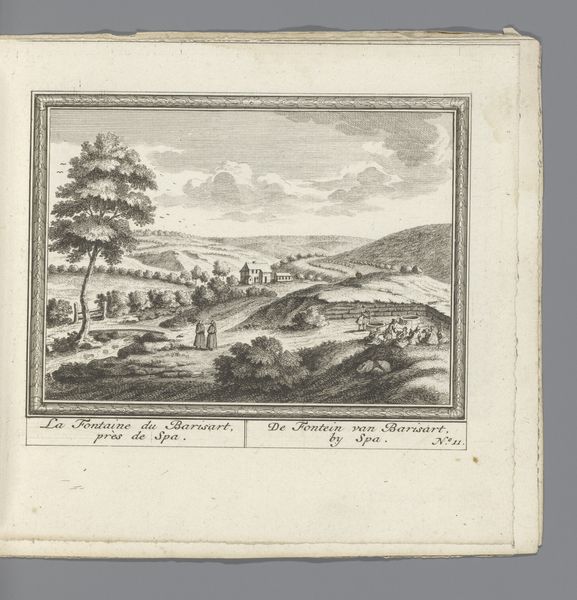
drawing, plein-air, watercolor
#
drawing
#
neoclacissism
#
lake
#
plein-air
#
landscape
#
watercolor
#
ink colored
Dimensions: height 95 mm, width 172 mm
Copyright: Rijks Museum: Open Domain
Curator: This delicate watercolor, entitled "Gezicht op Le Pont aan het Lac de Joux," was created by Johann Ludwig Aberli in 1782. It presents a serene vista of the Lac de Joux. Editor: It strikes me as remarkably composed, a near-photographic rendering in such muted, earthy tones. I immediately notice the texture given to the rugged terrain through skillful application of the watercolor. Curator: Indeed. Aberli was quite known for these kinds of plein-air landscapes. This aligns with the emerging Neoclassical interest in the direct observation and faithful rendering of nature, albeit filtered through a rationalizing eye. It speaks to a desire to document and categorize the natural world. Editor: Categorization, certainly. But I also see evidence of careful material choices influencing that categorization. Notice the fine lines, likely drawn with a very delicate pen and ink, used to define the architectural details, almost like technical drawings. This precise approach feels tied to the means of production, a controlled application that echoes an impulse to order and regulate what's being depicted. Curator: Interesting. It's also important to consider Aberli's place within the artistic and social circles of his time. These landscapes became incredibly popular as souvenirs for the elite, participating in what we might call the "Grand Tour." Aberli provided picturesque images for a burgeoning tourist industry. Editor: Absolutely. The production of such landscapes fed into an economy of taste and consumption, reflecting the growing demand for imagery that signified sophistication and cultivated sensibility among the wealthy. It prompts me to consider who had access to view and purchase artwork during this period. Curator: A pertinent point. It reveals the dynamics between artistic output, patronage, and the circulation of imagery within specific social classes. Editor: Precisely. Thinking about the creation and consumption reminds us that artistic representations aren’t neutral records, but they actively shaped perceptions. It makes one reconsider this quaint landscape’s participation in a very class-bound society. Curator: A wonderful insight. It highlights the many layers of interpretation this image can hold. Editor: It does. It brings a deeper understanding to even what seems at first to be an innocent rendering of the natural world.
Comments
No comments
Be the first to comment and join the conversation on the ultimate creative platform.
